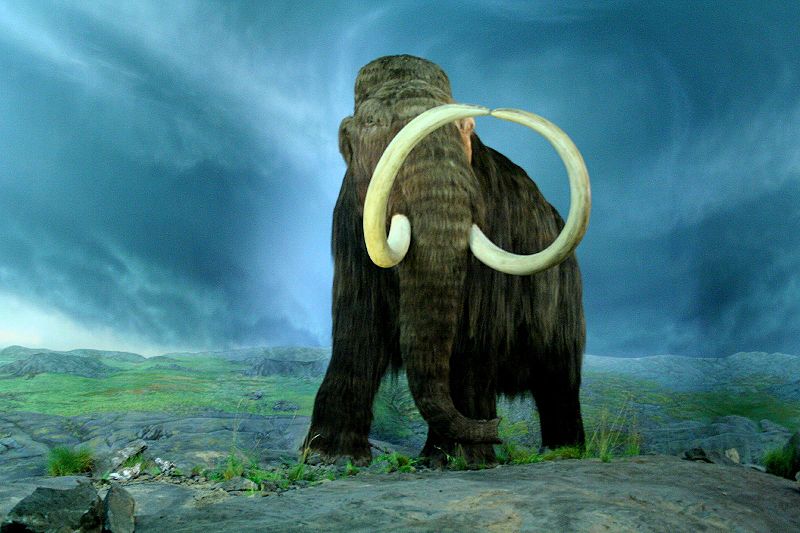
Back in April 2011, I wrote a blog post about rare or exotic knife handles with a few materials.
In the ensuing seven years (I’ve been at this a long time), I’ve encountered a ton of interesting handle materials, so I thought it’d be cool to go back and update this post.
I was originally inspired by an interesting feature about exotic knife handle materials and how the U.S. Fish & Wildlife Service regulates the importation of certain material published in the May 2011 issue of BLADE magazine. In the piece, the author mentioned some exotic material I didn’t know was used for handles. Upon more research, I found that there are a lot of exotic or rare knife handle materials used by custom makers.
Although you probably shouldn’t go hunt an endangered animals for any reason (since it is very illegal), I thought I’d make a list of the most exotic and rare knife handle materials on the market.
(Also, be aware that some of this material is banned, so it requires careful documentation that proves it was made before it was banned or the whole knife could be confiscated.)
This isn’t a list of the rarest material but just some interesting materials you may not have known was used to make knives (along with some cool pictures).
Let me know in the comments if there are any others that should be added to the list.
Giraffe Bone
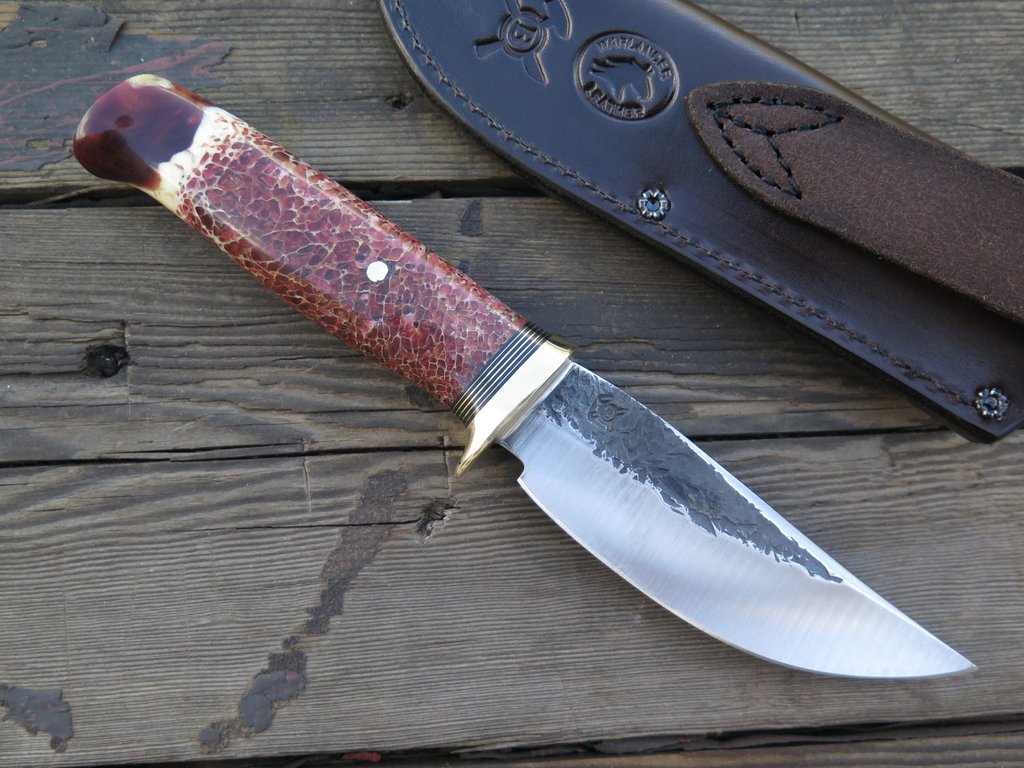
Stabilized Giraffe Bone Hunter from Behring Made
While this material is not necessarily rare since it pretty much dominates the bone handle material market, it’s definitely exotic.
Most of the giraffe bone material is imported from South Africa. You need permits and must have certificates of origination with most of this material or it could be confiscated.
I’m not sure how they get all of the giraffe bone, but the majority is found simply roaming around and finding carcasses leftover from lion attacks.
Mammoth Ivory & Teeth
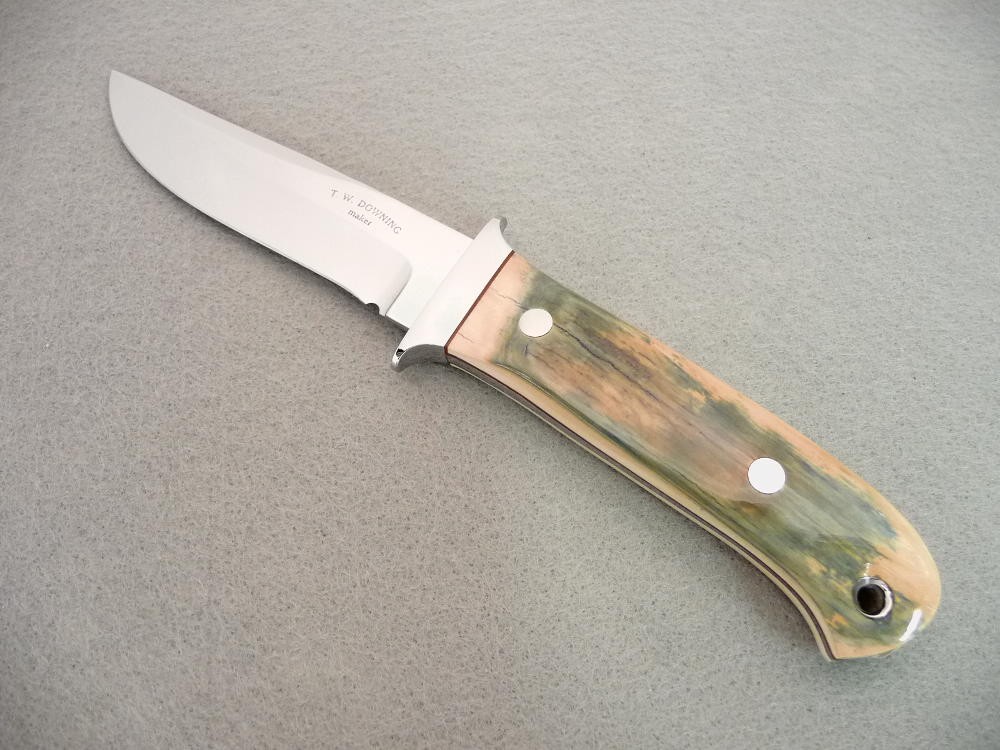
For anyone who doesn’t know what a mammoth is, it’s an extinct genus of animals that are the relative of modern elephants. While there are variations, like the famed woolly mammoth, the typical mammoth was similar to the modern elephant except much bigger.
Since they are extinct, the supply of mammoth tusk is fairly limited and the knife handles that are made out of the material are expensive. Some people think that instead of sitting in a boring old museum forever, 11,000-year-old mammoth tusks should be used for cool knives. There are still an estimated 10 million buried mammoths, so it could be much more common if someone were interested in excavating the frozen tundra of Siberia.
Along with mammoth ivory, you can also find mammoth teeth and bone handles. For example, Boker makes a mammoth tooth knife you can buy for about $340.
And thanks to modern technology, it’s possible we’ll be seeing some real live mammoths roaming the earth soon.
Tortoise Shell
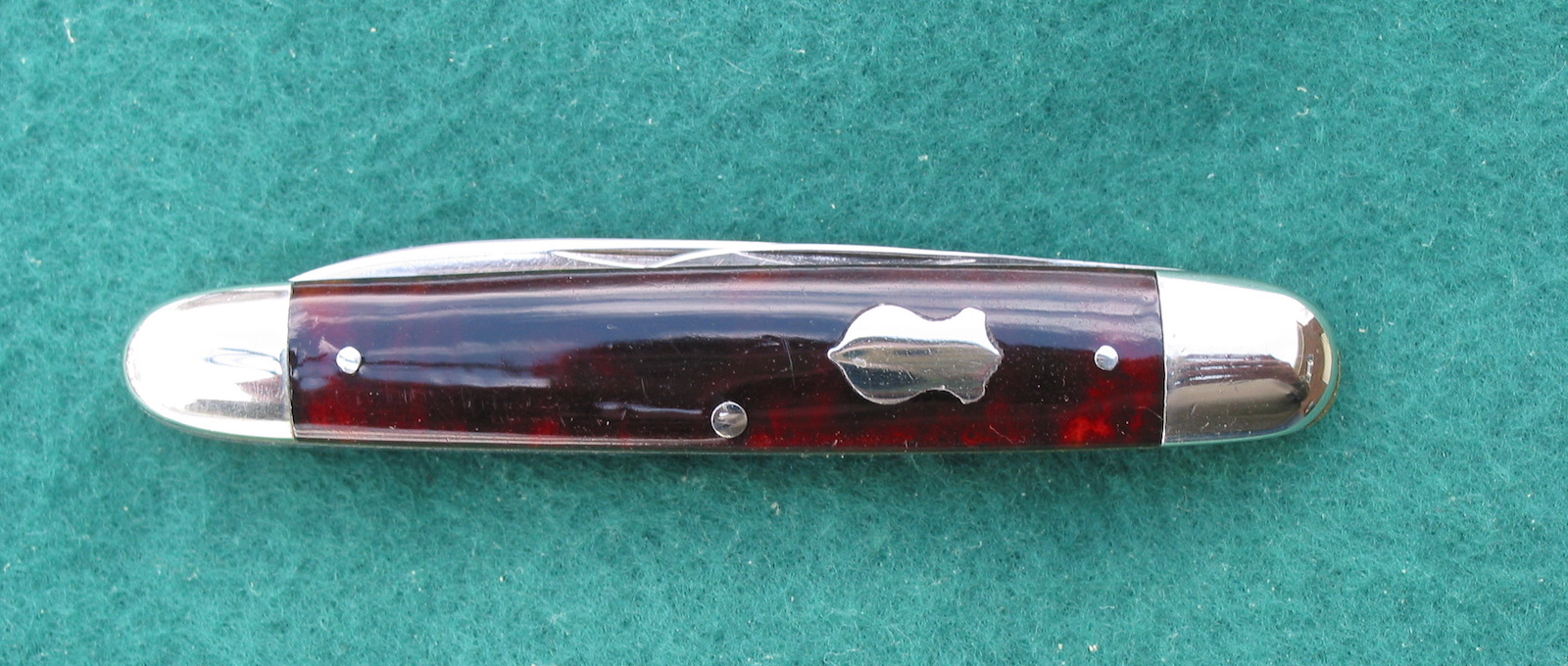
Image from All About Pocket Knives
Despite the name “tortoise shell,” the material actually comes from certain types of sea turtles. Since sea turtles are considered endangered, this material is illegal unless you have a certificate stating that it was made before there was a ban. The fact that they’re so rare makes the handles unique, but also highly susceptible to imitation.
Wood from Peach Trees
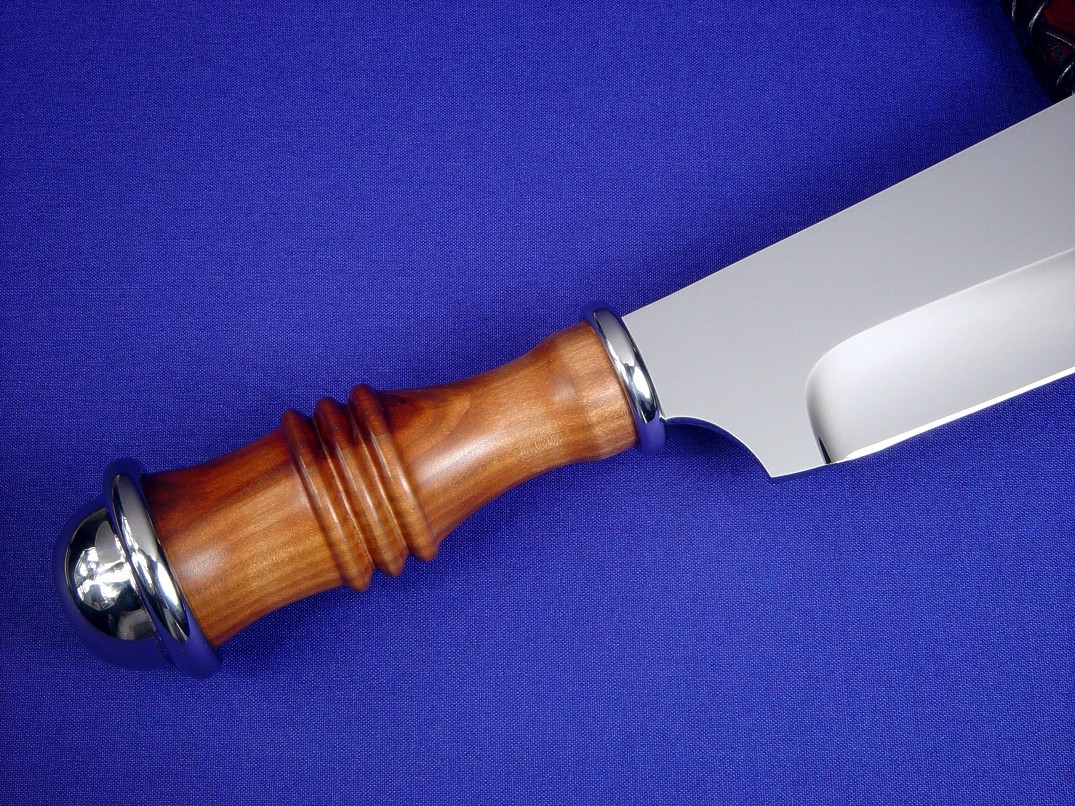
Image from Jay Fisher
All the material thus far has been made from an animal, but certain wood is also pretty rare.
Wood from peach trees, not to be confused with another common material called “peachwood,” is very limited. The reason is because there is little wood on peach trees and they often crack or splinter easily, but the wood is fine and coveted to knife makers. According to Jay Fisher, the material is great because it’s hard, durable, dense and attractive.
Hippo Tooth
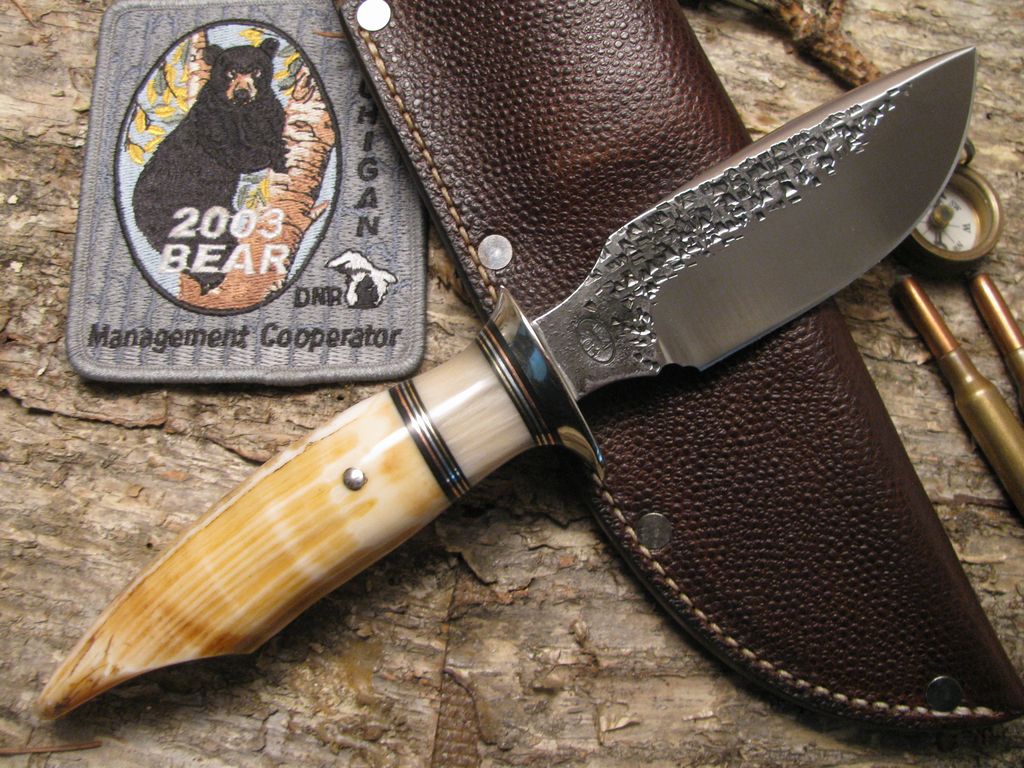
From Treeman Knives
Certain materials simply aren’t very common because they’re hard to find, which is the case with hippo teeth. The knife above was made from hippo bone that was fossilized, so it will retain its shape, coloring and mold.
There are different laws concerning the use and carrying of hippo knife handles, so you should be careful, especially in the UK, if you have one of these rare knives.
Dinosaur Bone
If you think mammoth bone is old, dinosaur bone is even older. Some of this material is about 150 million years old.
But the thing about dinosaur bone is that it’s so old it’s essentially stone. Unlike some mammoth bone, there is no organic material left. Dinosaur bone can look downright beautiful but it can cost a pretty penny.
There are actually many different types of petrified dinosaur bone so you get a wide variety of colors and styles.
Coprolite – Fossilized Feces
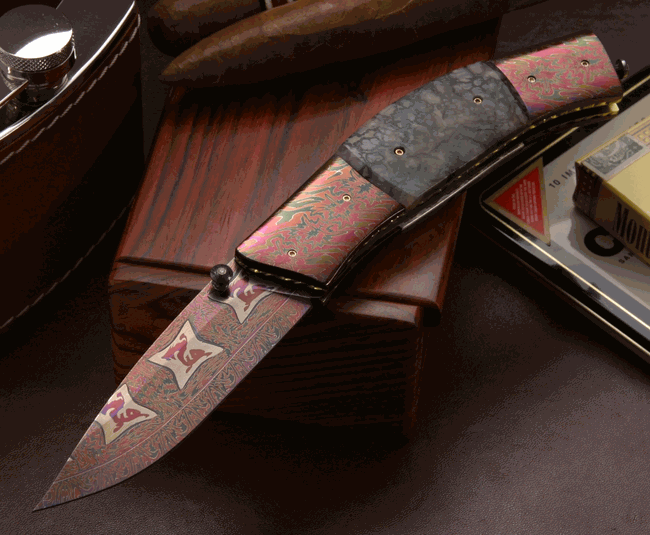
Coprolite handled knife made by John Gustaffson via Field & Stream
With giant dinosaurs roaming the earth, you’ve probably wondered where all the massive turds went. Well, some of those turds are still around and you can actually get a knife with handles made from it. The official term is coprolite (though that includes fossilized dung of other ancient animals as well).
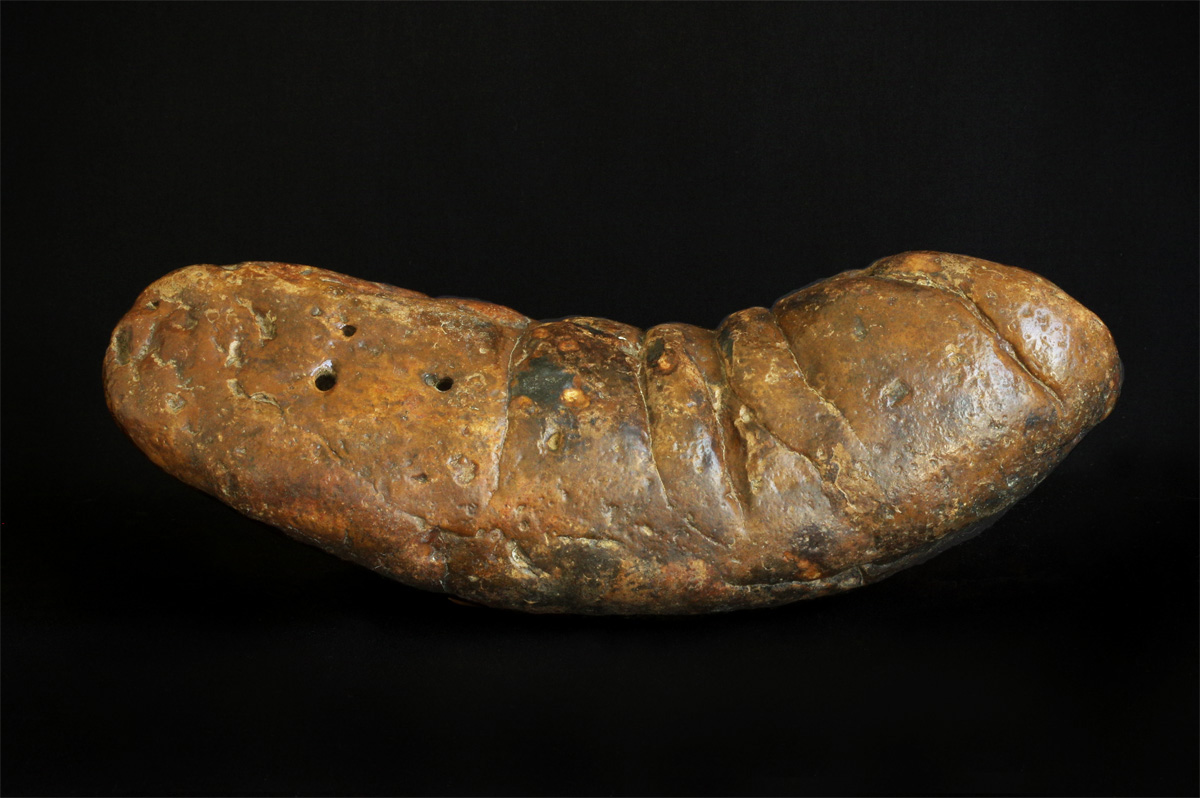
Coprolite
You can find some other interesting materials within the coprolite, which is cool. Some of the knives, like the one above, can go for a few thousand dollars.
Meteorite
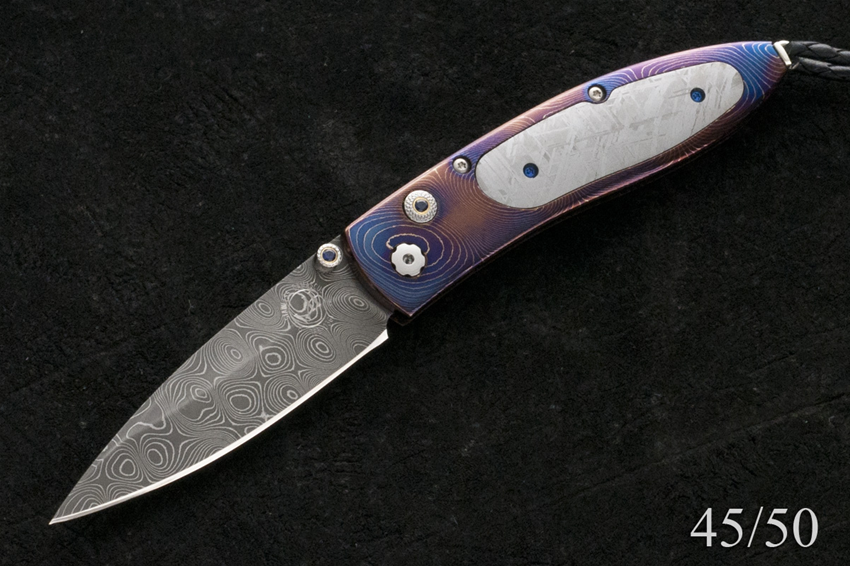
William Henry knife with meteorite handle via Plaza Cutlery
From the depths of the bowels to outer space — next up is meteorite. A meteorite is a comet, asteroid, or meteoroid that makes it from space to earth.
You may think meteorites are rare, but they are pretty common. According to Cornell, 18,000 to 84,000 meteorites bigger than 10 grams fall to earth per year, but most of it doesn’t make its way to the surface and others fall into the ocean. Still, you can find a lot of the stuff around.
Most knives that use meteorite have a blade made from the material because it’s mostly iron, but you can find meteorite in some handle scales.
For those curious, here is Bob Kramer and some other guy making a meteorite knife.
Oosic
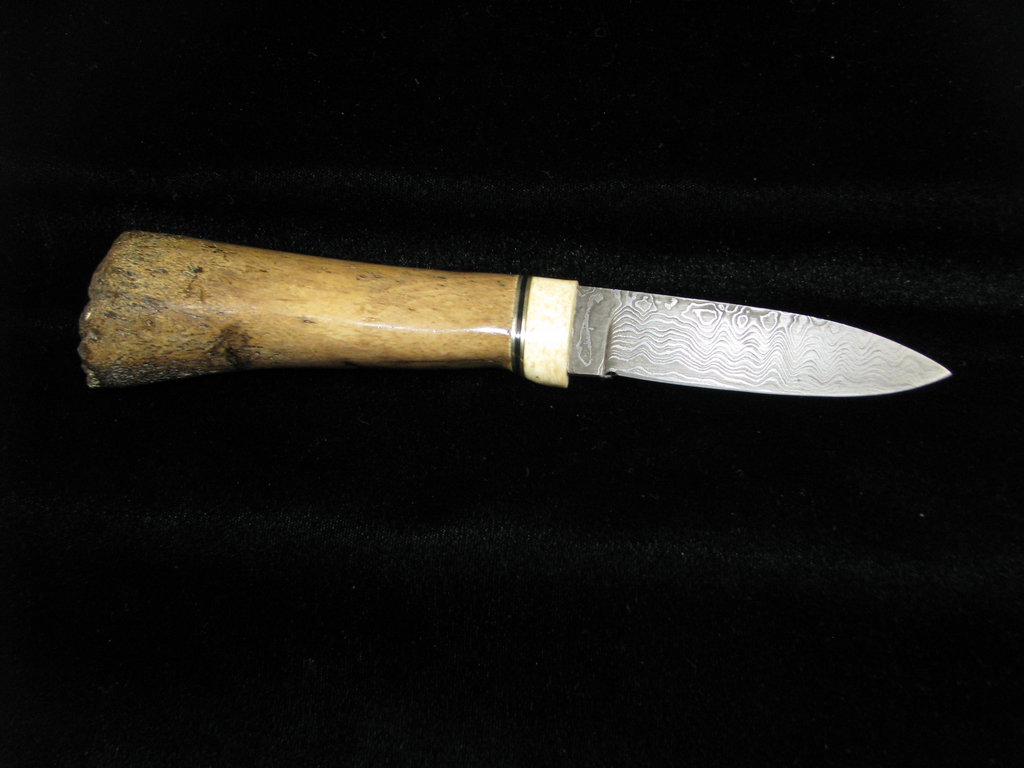
Oosic handle with a muskox horn spacer from Deviant Art
What is stranger than fossilized dinosaur feces? That’s right… fossilized walrus penile bone aka oosic or oosik. This material has actually been used by Alaskan natives for hundreds of years as it washes up on shore.
Oosic is a bone found in different types of mammals like polar bears and whales, but I believe walrus makes the best material because of its length.
Fun fact: In 2007, a 4.5 foot long fossilized penis bone from an extinct walrus was sold for $8,000.
Armadillo Tail
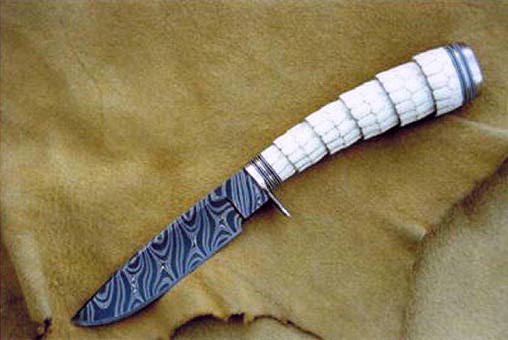
Armadillo tail handle from Tom Bullard
Armadillo scale knives are not that common, but armadillo tail knives are even rarer.
Here is an excerpt from an Australian website talking about gauchos or horse riders from South America and the use of armadillo tails:
Back in the old days Gauchos would make knife handles from different materials varying from classic to very exotic ones. The Tatu (Armadillo) its an little mammal with a leathery armour shell. Armadillos tails are also very strong. As gauchos would hunt them for food the tail was also used as a knife handle. Armadillos are now protected and there are no knives made with armadillo tails anymore.
If you’re keen on doing something with armadillo, just be aware that they are known to carry and spread leprosy.
Porcupine Quills
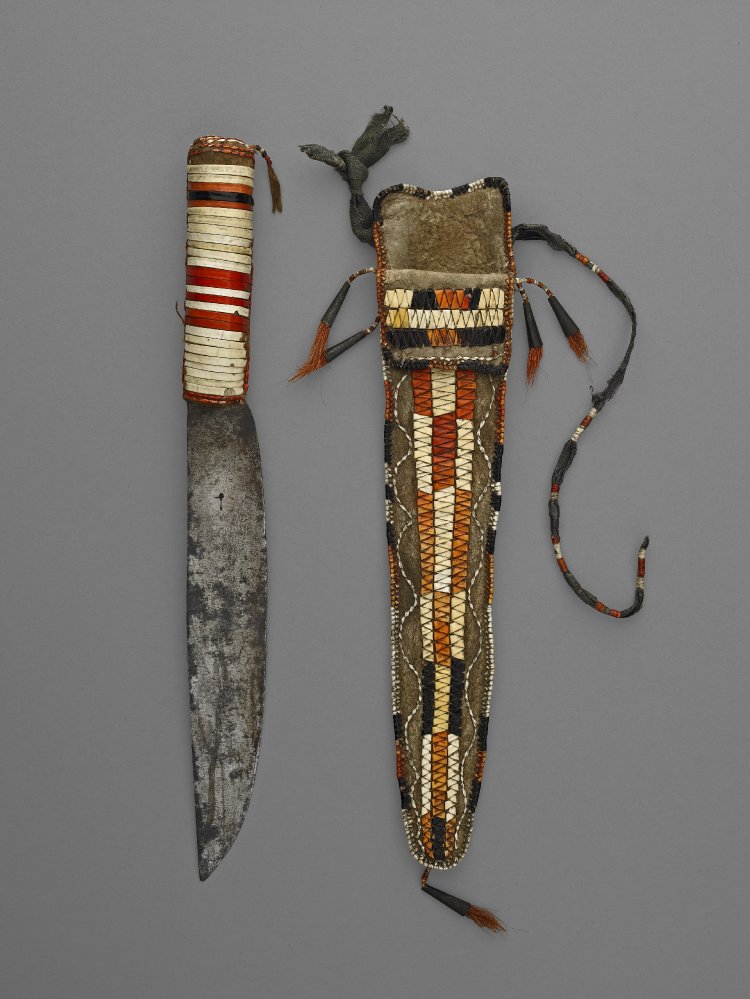
Knife and Sheath covered in porcupine quillwork from the 1760s via British Museum
Quillwork uses porcupine quills to create beautiful art. It is a practice used by Native Americans.
I would say this kind of handle is exceptionally rare, but it’s not entirely unheard of.
There’s also a guy in a YouTube video showing porcupine quillwork on a handle of a flint blade, which is fascinating to watch.
The finished product is aesthetically pleasing.
Human Bone
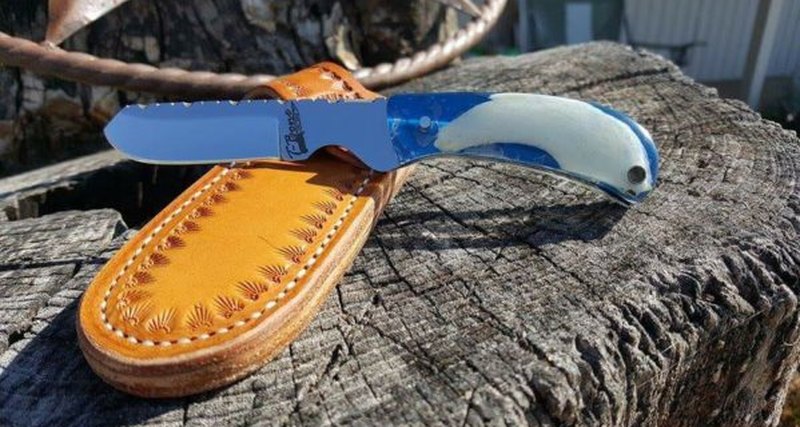
Knife made from human rib by Travis Payne
Carrying a knife made from a human bone is a bit morbid, but it’s not completely strange. In fact, one of my favorite Blade Magazine stories of the past few years is a touching story of a girl who had her rib turned into a knife after she was forced to get it removed.
You can find some antique knives made from human bones as well.
Gemstones
I’m definitely cheating here because there are a ton of different gemstones used to make knife handles, each with their own personality. Jay Fisher, who claims to make the most gemstone handled knives of any custom knifemaker in the world, has an excellent resource on gemstone knives.
Here is a quick excerpt from his site on the definition:
“Gemstone” is the name that we assign to minerals or compounds that we value. Technically, the definition for gemstone is any stone that can be cut and polished and used in jewelry and for adornment. What makes one mineral or rock a gem and one that is not? Whether we value it or not. It is a very loose classification as many rocks that used to be of value are not anymore, and rocks that were of no value are nowadays treasured.
These come in all types of colors, patterns, and “visual features.” I highly recommend checking out his pages and pages of pictures to see the range of what you can get. As you can guess, some gemstones are rarer than others.
Here are just a few images from Jay Fisher:
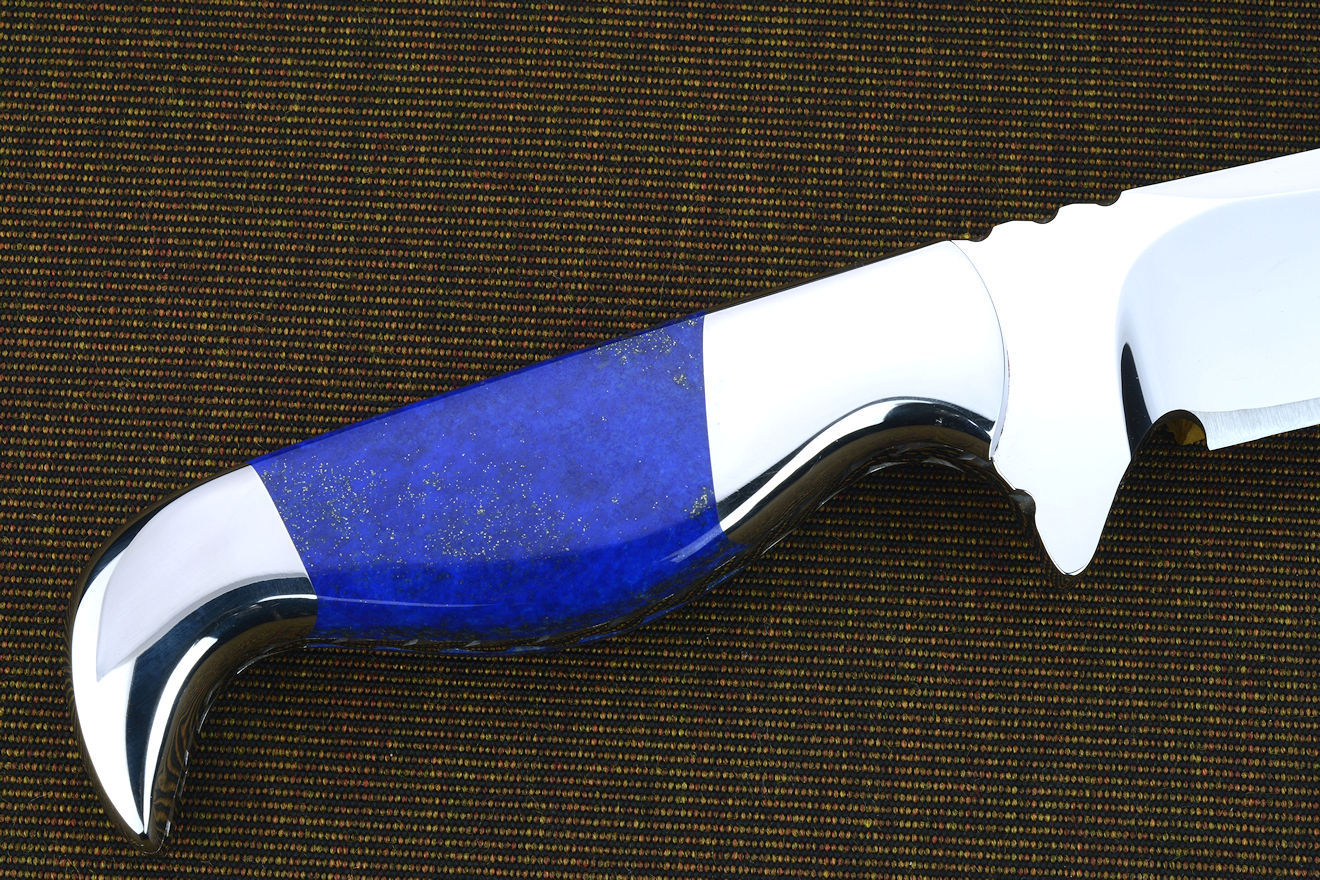
Lapis Lazuli 5 – Jay Fisher
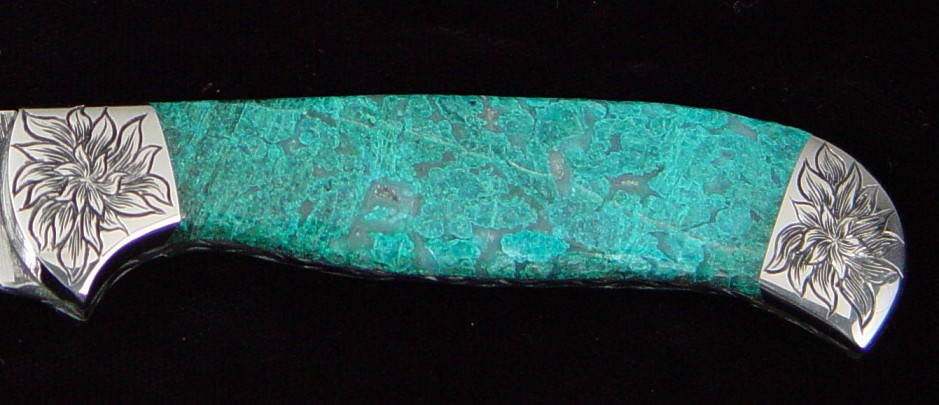
Chrysocolla 3 – Jay Fisher

Brazilian Agate 2 – Jay Fisher





August 7, 2018 at 2:21 pm
How about Amber? Is Amber used as knife scales?
December 28, 2018 at 1:46 pm
Only Amber’s rib may be used.
February 26, 2019 at 6:13 pm
You crack me up.
June 13, 2019 at 12:03 am
LMFAO!!!
October 9, 2020 at 8:15 pm
Hi 👋 my name is Charlene Sellers
My father and I own Maya Mountain Exotic Hardwoods in Belize, central America. We specialize in beautiful exotic hardwoods and I would like to expand your wooden knife handle material section with specifically rosewood burl which when paired with Damascus blades is breathtakingly beautiful. I will gather some images to show you what this combo looks like along with images of other types of wood that we carry. Please email me back and let me know if you’re interested.
Thank you,
Charlene Sellers
September 28, 2021 at 7:41 am
I’d love to see some of the types of wood you offer.
September 28, 2021 at 7:43 am
I’d love to see some of the types of wood you offer.
October 30, 2021 at 2:17 pm
I am looking for a tanned Armadillo hide.